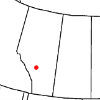
West Central Alberta Coldest, wettest edge | Serious question, why are weeds bad, and by what mechanism do they do most of their damage? Is it by taking the limited moisture, tying up limited nutrients for a while, shading the real crop, providing hosts for bad insects, or just making the crop look bad to all the neighbors driving by? I realize some regions are dealing with invasive and resistant weeds, that we don't see here, but they can't all be bad, can they? We spend a fortune making certain that we get only a monoculture during the growing season, and feeding it accordingly, then folks are spending more time and money to seed a cover crop, could there be a compromise in there somewhere?
A number of posts and articles lately have me wondering if weeds aren't all bad.
This one, a new respect for dandelions
http://talk.newagtalk.com/forums/thread-view.asp?tid=426514&mid=3408601#M3408601
This one, the benefits of a cover crop for increasing mineralization and stimulate soil life( many more like it, couldn't we replace the word cover crop with managed weed?):
http://talk.newagtalk.com/forums/thread-view.asp?tid=425957&mid=3404163#M3404163
A local farm magazine had conflicting articles. One says how we should aim for completely weed free feilds. With another saying we need a variety of flowers to attract bees to increase crop yields( most weeds have flowers) and another explaining why crop rotation works, due to the massive increase in biodiversity on the microfauna etc in the soil. My take on that, a variety of weeds would also host a bigger variety of soil organisms than a monoculture crop.
Cover crops are all the rage, but it seems redundant to go to all the effort of killing every last weed, just to seed more and call it a cover crop, couldn't there be a way to be selective in allowing weeds/timing and call them a cover crop?
I farm in an area where moisture is rarely limiting, heat usually is, compaction, water infiltration and crusting are issues, I really dread seeing bare ground. Wouldn't it be better to give the critters( technical term of course) in the soil a variety of plants and something to eat as long as possible, with as little added effort and expense as possible? Around here,cereal crops will compete with weeds quite succesfully unless the weather is very unforgiving. Canola will put in a good effort. We don't have a long enough growing season to include cover crops as far as I can tell, but would really like the benefits of them.
Some of our local common weeds that I see benefits too: Clover has obvious benefits, as would any other legume, it generally doesn't grow tall or fast enough to offer much competition unless it is really wet. Quackgrass, while insiduous, adds an incredible volume of material in its root system, and makes very good cow feed, but can be very competitive depending on the moisture conditions. Dandelions would seem to have many of the benefits of tillage radish, except they like to grow in the wrong part of the growing season compared to radish. I've tried to see a good side to Canada Thistles, but just can't.....
Is there a way we could be selectively spraying/ controlling weeds to get some benefits, or are they all bad, or are our local conditions unique in the agricultural world? Could we select for or breed for weeds like clover that would lie dormant until later in the growing season, then grow once the crop is shutting down.
So what are the flaws in my logic?
Edited by Alberta Farmer 10/28/2013 16:55
|


 Why are weeds bad? ( Serious Question)
Why are weeds bad? ( Serious Question)